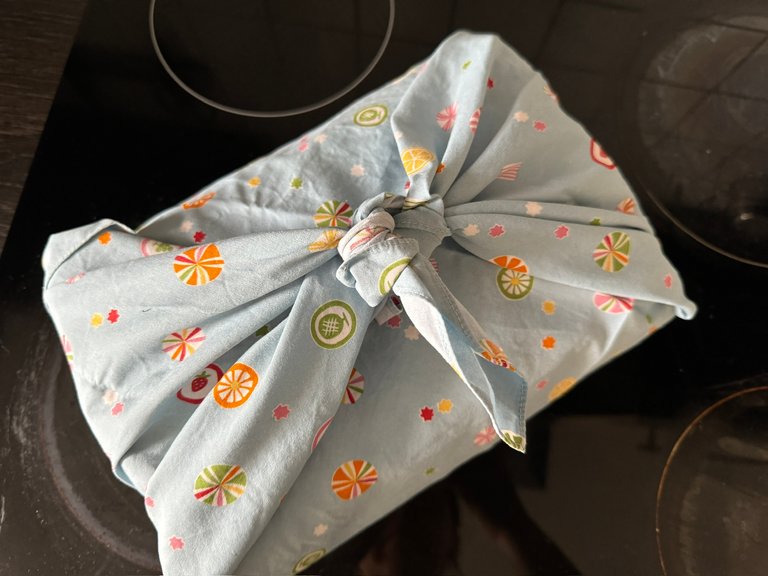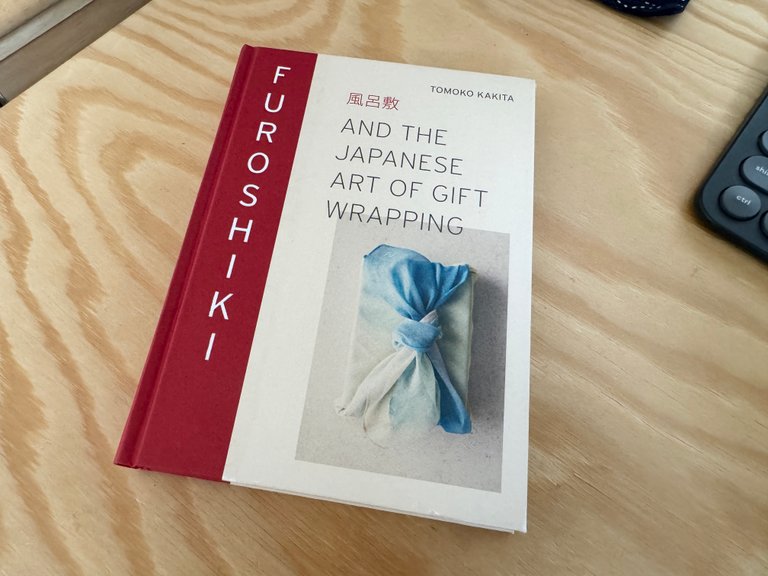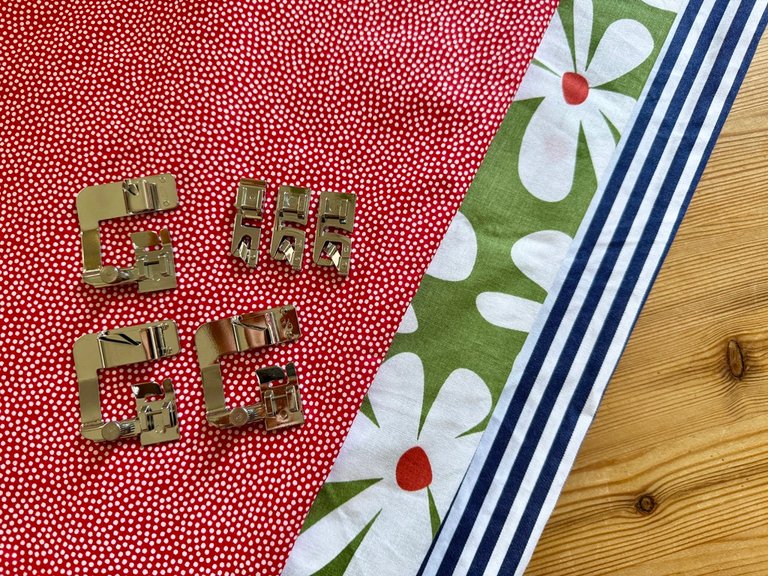
It has been quite some time since the environmental impact of plastic shopping bags came into the spotlight. Nowadays, many people, myself included, use eco-bags in their daily lives. While I love using my eco-bags, I’m also a big fan of the Japanese tradition of wrapping with furoshiki. Recently, I’ve been thinking about whether it might be possible to produce furoshiki in my local area and promote their use.
This morning, my partner mentioned an interesting opportunity that seems like a good fit for this idea, so I’m planning to write a proposal for it. As a warm-up, I’d like to share some thoughts about furoshiki on my Hive Blog today.
What is Furoshiki?
Furoshiki is a traditional Japanese square cloth used for wrapping and carrying items. Its origins date back to the Nara period (710–794 AD). Initially, it was a practical tool for transporting goods wrapped in cloth.
The term “furoshiki” became popular during the Muromachi period (1336–1573 AD). At that time, public bathhouses (furo) became widespread, and people used cloths to wrap and distinguish their clothing from others’. This practice led to the cloth being named “furoshiki.”
During the Edo period (1603–1868 AD), furoshiki became even more widely used. Merchants and common people used it extensively for wrapping and carrying goods. Furoshiki came in various designs and sizes and became deeply ingrained in daily life. This everyday use is even depicted in famous ukiyo-e series such as Katsushika Hokusai’s “Thirty-Six Views of Mount Fuji.”

Although furoshiki has been used for centuries, Western culture became more prevalent in Japan towards the end of the 19th century, and by the time I was a child, I had an image of furoshiki that is something used by grandmothers.
My Relationship with Furoshiki
In 2011, I moved to Europe for a research exchange in Austria, and since 2013, I’ve been living in Germany. At some point, my mother gave me a furoshiki. She has passed away and
I realized that I had always been fond of Japan’s “wrapping culture,” whether it was wrapping my bento in a handkerchief, enjoying beautiful gift wrapping, or carefully wrapping money when giving it to someone.
Living abroad made me re-evaluate Japanese culture, and I began to appreciate and use furoshiki more for its flexibility and beauty.

The Benefits and Potential of Furoshiki
In daily life, many people find eco-bags convenient and easy to use. Furoshiki, however, requires folding and tying when used as a bag, which can be a bit more effort compared to eco-bags.
On the other hand, the advantage of furoshiki is its flexibility; you can wrap items of various sizes and shapes. Another charm is how easy it is to carry items straight and parallel. Recently I even bought a book to explore different wrapping techniques.

Additionally, furoshiki comes in various designs and materials, making it a versatile choice for everyday use or gift wrapping. The fact that it embodies a piece of traditional Japanese culture, beloved by many worldwide, is something I’d like to proudly promote as a Japanese person.
My New Project: Local Produced Story-Telling Furoshiki
As I’ve mentioned, I love furoshiki. Making them is not very complicated—you simply cut the fabric into a square, fold the edges three times, and sew them. It’s even easier if you have a sewing machine attachment for making folded hems.
I’ve started to think about finding Japanese-style fabric and asking some of my sewing-savvy mom friends or local grandmothers to help me make furoshiki. It could even become a small side income for them.
Potential sales channels include local markets that focus on local products, where I already have a presence, or stores with a strong focus on environmental awareness. The proposal I mentioned earlier is for an application related to cultural events or workshops, so holding a workshop to introduce the history and uses of furoshiki could also be a good way to spread the word.
To start, I’ve purchased some fabric and a sewing machine attachment for folded hems to create a prototype. This weekend, there’s a flea market at a friend’s shop, and next week I’ll be at the local market, so I plan to see how people respond.

In the future, I dream of adding QR codes to the furoshiki, allowing the maker, the owner, and subsequent owners to leave messages or comments—creating a story that travels with the furoshiki.
Next month, there’s @hivefest, and I think it would be nice to bring some furoshiki as souvenirs … 😊
Conclusion
Writing this post has helped me organize my thoughts for the proposal by summarizing the history of furoshiki, my personal connection to it, its charm, and the furoshiki project I’m working on. Thank you for taking the time to read this.
Furoshiki, coexisting with eco-bags, offers a unique appeal in its flexibility and versatility, with endless possibilities depending on how you use it. By blending traditional beauty with modern sustainable living, furoshiki has the potential to add new value to our eco-friendly lifestyles.
I’m excited to write a strong proposal and make this project a reality. I’ll share more updates on Hive Blog as things progress.
プラスチックの買い物袋の問題が指摘されるようになって久しく、日々エコバッグを使っているという人も多いと思います。私もその一人です。エコバッグを愛用する一方で、包む文化を持つ日本の風呂敷も大好きで、最近、私が住んでいる地域で風呂敷を生産できないか、利用を広められないかと考えています。
パートナーが今朝このアイディアと相性の良さそうな公募を教えてくれて、プロポーザルを書こうとしています。今日はそのウォーミングアップも兼ねて、Hive Blogに風呂敷について書きたいと思います。
風呂敷とは
風呂敷(ふろしき)は、日本の伝統的な正方形の布で、物を包んだり、持ち運んだりするために使われてきました。その起源は古く、奈良時代(710–794年)にまで遡るとされています。当初は布に包んで物を運ぶための実用的な道具として使われていました。
「風呂敷」という名前が広まったのは、室町時代(1336–1573年)頃と言われています。当時、公共の浴場(風呂)が広まり、利用者が衣類を他人のものと区別するために布で包んで保管したことが始まりとされています。このため「風呂敷」と呼ばれるようになりました。
江戸時代(1603–1868年)には、風呂敷はさらに普及し、商人や庶民が物を包んで運ぶために広く利用されました。風呂敷は、多様なデザインやサイズで作られ、贈り物の包装や荷物を運ぶ際に使われるなど、日常生活に深く根付いていました。その様子は、葛飾北斎の有名な浮世絵のシリーズ「富嶽三十六景」に見ることができます。


こうして長らく使われてきた風呂敷ですが、19世紀の終わりから今日までの間に日本でも欧米文化が浸透し、私が子供の頃にはおばあちゃんが使うものといったイメージでした。
私と風呂敷
2011年にオーストリアに研究留学したのをきっかけにヨーロッパに拠点を移して、2013年からドイツに住んでいます。いつだったか、今は亡き母が風呂敷を一枚くれました。
お弁当をハンカチで包むのが好きだったり、贈り物をきれいにラッピングするのが好きだったり、お金はきちんと包んで渡したかったり、日本の「包む文化」に知らぬ間に慣れ親しみ愛着を感じていたと思います。
海外で暮らすようになり、日本文化を再評価する中で、風呂敷の柔軟性や美しさを気に入って使うようになりました。

風呂敷の良さ、ポテンシャル
日々の生活の中で、便利で手軽なエコバッグを愛用しているという人は少なくないと思います。
風呂敷は、バッグとして使うには、折ったり結んだりする必要があり、エコバッグと比べるとちょっと面倒くさいです。一方で、形が決まっていないよさもあり、物の大きさや形に合わせて自由に包むことができます。包んだものをまっすぐ平行に運びやすいのも魅力です。包み方を探求したくて一冊本を買いました。

また、風呂敷はデザインや素材のバリエーションが豊富で、日常使いとしても、ラッピングとしても、スタイルに合わせて選べます。
世界的にもファンの多い日本の伝統文化を感じさせるところもいいかな・・・なんて日本人としてプッシュしたいです。
地産地消、ストーリーを持つ風呂敷プロジェクト
ここまで書いてきたように、私は風呂敷が大好きです。風呂敷を作るのはそこまで手間ではありません。布を正方形に裁断して、端を三つ折りにしてミシンをかけるだけです。三つ折りにするミシンの金具があればより簡単に作れます。
和風の布を見つけて、洋裁が得意なママ友や、地域のおばあちゃんに頼むなどして風呂敷を作れないか考え始めました。ちょっとしたお小遣いになるのは悪くないのではないでしょうか。
販路は、私が出店している地産地消を目指す地域のマーケットや、環境意識の高いお店などいくつか思い浮かびます。また、冒頭でふれた公募は文化関連のイベントやワークショップに関する公募で、風呂敷の歴史や使い方を紹介するワークショップを開催して風呂敷について知ってもらうのもよさそうです。
まずはプロトタイプを作るべく、布とミシンの三つ折り金具を買いました。今週末に友人のお店でフリーマーケットがあり、来週は地域のマーケットにも出店するのでお客さんの反応を見てみようと思います。

ゆくゆくは風呂敷にQRコードをつけて、作った人からのメッセージ、持ち主、次の持ち主、またその次の持ち主のコメントを記録できるようにしたらおもしろいかも・・・などと夢は広がります。
来月にはHive Festもあるので、お土産に持って行けたらいいな・・・なんて。
おわりに
ここまで風呂敷の歴史、私と風呂敷、風呂敷の魅力、今考えている風呂敷プロジェクトについて文章にして、プロポーザルのアイディアを整理できました。お付き合いくださったみなさん、ありがとうございます。
風呂敷は、エコバッグと共存しつつも、柔軟性と多用途性が魅力のアイテムで、使い方次第で無限の可能性があります。伝統的な美しさと現代の持続可能な生活を結びつける風呂敷は、これからのエコライフに新たな価値をもたらポテンシャルがあります。
いいプロポーザルを書いて、プロジェクトを実現したいです。また進捗をHive Blogで共有しますね。
